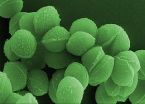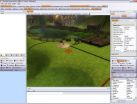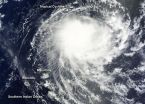(Press-News.org) New research involving rats, and published in the December 2014 issue of The FASEB Journal, suggests that if you were born at a low birth weight, supplemental co-enzyme Q (CoQ) may lower your risk for heart disease. This enzyme, which is naturally made in the body, is required to ensure the proper functioning of cell mitochondria and also protects cells from oxidative damage. Feeding low birth weight rat offspring extra CoQ prevented the age-associated damage that causes heart disease. Additionally, the reports shows that CoQ is reduced in white blood cells from low birth weight offspring, and levels of CoQ in the blood can be an indicator of how much damage to the aorta has already occurred.
"We believe our study provides the first steps in the development of a routine diagnostic test for blood coenzyme Q levels which can be used to identify individuals who are at risk of cardiovascular disease later in life," said Jane L. Tarry-Adkins, a researcher involved in the work from the Institute of Metabolic Science at the University of Cambridge Metabolic Research Laboratories in the United Kingdom. "Additionally, simple co-enzyme Q supplements may be able to lower these individuals risk."
To make their discovery, Tarry-Adkins and colleagues fed pregnant rats either a control diet or a diet that had the same total calories but contained less protein and more carbohydrates. The mothers fed the low protein diet had pups which had a low birth weight but grew quickly when suckled by a control fed mother. Researchers examined the aorta from the rats which were born small and grew very quickly after birth and showed that their cells aged more quickly than those from the normal birth weight offspring and that this was associated with a deficit in co-enzyme Q, in both the aorta and in the blood compared to the normal birth weight rats. Administering extra coenzyme Q in their diet from weaning prevented the accelerated aging of and damage to their aortas.
"Coenzyme Q is in the drug store now, but if you think that what you buy is going to keep you from having a heart attack or stroke, don't get your hopes up just yet," said Gerald Weissmann, M.D., Editor-in-Chief of The FASEB Journal. "This promising research was conducted in rats, and if it also applies to people, still doesn't tell us how much to take, for how long, and if it's safe for these purposes. We've got a long way to go on this one, but so far, so good!"
INFORMATION:
Receive monthly highlights from The FASEB Journal by e-mail. Sign up at http://www.faseb.org/fjupdate.aspx. The FASEB Journal is published by the Federation of the American Societies for Experimental Biology (FASEB). It is the world's most cited biology journal according to the Institute for Scientific Information and has been recognized by the Special Libraries Association as one of the top 100 most influential biomedical journals of the past century.
FASEB is composed of 27 societies with more than 120,000 members, making it the largest coalition of biomedical research associations in the United States. Our mission is to advance health and welfare by promoting progress and education in biological and biomedical sciences through service to our member societies and collaborative advocacy.
Details: ane L. Tarry-Adkins, Denise S. Fernandez-Twinn, Jian-Hua Chen, Iain P. Hargreaves, Malgorzata S. Martin-Gronert, Josie M. McConnell, and Susan E. Ozanne. Nutritional programming of coenzyme Q: potential for prevention and intervention? FASEB J. December 2014 28:5398-5405; doi:10.1096/fj.14-259473 ; http://www.fasebj.org/content/28/12/5398.full
Tropical Storm Hagupit was just a low pressure area on Nov. 30, but warm waters and good atmospheric conditions allowed the storm to develop rapidly. By Dec. 1 the low pressure area strengthened into a tropical storm when NASA's Terra satellite passed overhead.
The Moderate Resolution Imaging Radiometer known as the MODIS instrument that flies aboard NASA's Terra satellite captured a visible image of Tropical Storm Hagupit in the western Pacific Ocean on Dec. 1 at 00:05 UTC (7:05 p.m. EST, Nov. 30). The picture showed a concentration of strong thunderstorms around the ...
If we believe a negative trait we possess is linked to a related positive characteristic, we will be more productive in that domain, New York University researchers have found. Their study, which appears in the Journal of Experimental Social Psychology, establishes a novel "silver lining theory": negative attributes can produce positive results.
"People know that a weakness can be also be a strength, but these results show that if we actually believe it, we can use these beliefs to our advantage," says Alexandra Wesnousky, an NYU doctoral candidate and the study's lead ...
This news release is available in German. Jülich, 27 November 2014 - The resolution of scanning tunnelling microscopes can be improved dramatically by attaching small molecules or atoms to their tip. The resulting images were the first to show the geometric structure of molecules and have generated a lot of interest among scientists over the last few years. Scientists from Forschungszentrum Jülich and the Academy of Sciences of the Czech Republic in Prague have now used computer simulations to gain deeper insights into the physics of these new imaging techniques. ...
This news release is available in German.
Genome engineering with the RNA-guided CRISPR-Cas9 system in animals and plants is changing biology. It is easier to use and more efficient than other genetic engineering tools, thus it is already being applied in laboratories all over the world just a few years after its discovery. This rapid adoption and the history of the system are the core topics of a review published in the renowned journal Science. The review was written by the discoverers of the system Prof. Emmanuelle Charpentier, who works at the Helmholtz Centre ...
Teenage boys are perhaps more known for playing computer games but girls are better at making them, a University of Sussex study has found.
Researchers in the University's Informatics department asked pupils at a secondary school to design and program their own computer game using a new visual programming language that shows pupils the computer programs they have written in plain English.
Dr Kate Howland and Dr Judith Good found that the girls in the classroom wrote more complex programs in their games than the boys and also learnt more about coding compared to the ...
"We have not seen an ice free period in the Arctic Ocean for 2,6 million years. However, we may see it in our lifetime." says marine geologist Jochen Knies. In an international collaborative project, Knies has studied the historic emergence of the ice in the Arctic Ocean. The results are published in Nature Communications.
The extent of sea ice cover in Arctic was much less than it is today between four and five million years ago. The maximum winter extent did not reaching its current location until around 2.6 million years ago. This new knowledge can now be used to ...
This news release is available in German. FRANKFURT The chances of patients with Philadelphia chromosome-positive leukaemia (Ph+) being cured has greatly increased in recent years. Nevertheless, a high percentage of patients have developed resistance to available medication. But now, haematologists from Frankfurt, working with a Russian pharmaceutical company, have developed a new active substance that effectively combats the most aggressive forms of Philadelphia chromosome-positive leukaemia, both in vitro and in vivo. They have reported this in the current edition ...
Tropical Depression 21W crossed the Philippines and moved into the South China Sea where warm waters helped strengthen the storm into Tropical Storm Sinlaku. NASA's Aqua satellite passed over the storm and captured an image that showed it appeared elongated.
Despite the strengthening of Tropical Depression 21W into a tropical storm on Nov. 28, it appeared elongated from southwest to northeast on visible imagery taken by the Moderate Resolution Imaging Spectroradiometer (MODIS) instrument that flies aboard Aqua. The MODIS image also showed that the strongest thunderstorms ...
NASA's Terra satellite passed over Tropical Cyclone 02S after it formed in the Southern Indian Ocean on Nov. 28. An image from Terra showed that the new tropical storm is close to Mauritius and Reunion Islands.
The Moderate Resolution Imaging Spectroradiometer or MODIS instrument aboard NASA's Terra satellite captured a visible image of newborn Tropical Cyclone 02S northeast of the islands of Mauritius and Reunion. The MODIS image showed that thunderstorms were mostly west of the low-level center of circulation and bands of thunderstorms were wrapping into the center. ...
This news release is available in German. Humans don't like being alone, and their genes are no different. Together we are stronger, and the two versions of a gene - one from each parent - need each other. Scientists at the Max Planck Institute for Molecular Genetics in Berlin have analysed the genetic makeup of several hundred people and decoded the genetic information on the two sets of chromosomes separately. In this relatively small group alone they found millions of different gene forms. The results also show that genetic mutations do not occur randomly in the ...






